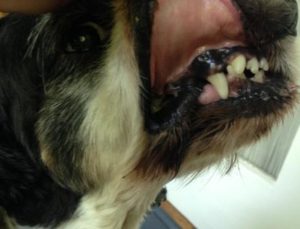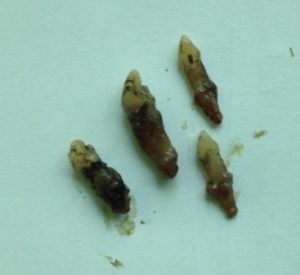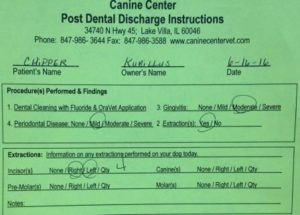“Come Buddy,” I motioned my arm for my sister’s deaf twelve year-old cocker spaniel to approach me as I sat on the kitchen floor, toothbrush in hand. He patiently sat in front of me while I inserted his new toothbrush into his mouth. He had just moved in with me since my sister didn’t think he would survive the four-day drive to California where she was re-locating.
I turned my head away as he exhaled a rotten egg smell. His yellow and black teeth suffered from years of neglect. I only hoped I could reduce his bad breath by starting a daily brushing routine. His foul breath prevented me from giving him many hugs and pets he needed at this time of transition so late in his life.
I had always brushed my own dog’s teeth, but only a few times a week. Kaylee, my springer spaniel, was only two and her breath was fresh and her teeth white. But I learned from Buddy the importance of dental hygiene. Buddy wasn’t healthy enough to undergo anesthesia for a professional cleaning, so I did what I could. Even with daily brushing, his breath remained foul.
I vowed never to let my dogs get bad breath in their old age again, so I maintained a daily brushing routine.
That’s why I brush my dog’s teeth – to prevent bad breath, so I can enjoy their company well into their senior years. And it has worked. None of my dogs since Buddy has had bad breath.
I brush their teeth daily, not at the best time, since it is part of their daily grooming before breakfast. But this routine has worked for me for decades. My cleaning is not sufficient to prevent tartar build up, but it helps a lot.


Chipper, the cocker I inherited from my mom, just got his teeth cleaned this week. He’s now eleven and even after three years of brushing his teeth, they still looked bad, so the vet recommended professional cleaning. He also needed to get a few bumps removed. The difference was amazing-he no longer had black stains on his teeth. The vet removed four small teeth and said he had moderate gingivitis and mild periodontal disease. She stressed it was better to get his teeth cleaned now than to wait until there’s a problem.
So here’s my recommendation so you can enjoy your pet long into their senior years:
- Brush their teeth daily with a dog toothpaste. Mine prefer poultry flavor (yuck).
- Sometime between the ages of 7 and 10, get their teeth professionally cleaned. You may need to do this more than once in their lifetime. Your dog needs to be healthy enough for the anesthesia and get a few troublesome lumps removed while you’re at it.

It’s good for their health. Bad teeth can cause bacteria to spread to vital organs, causing serious health issues.
Watch this video on how to clean your dog’s teeth – it shows a springer, my favorite breed!
http://www.pethealthnetwork.com/dog-health/dog-checkups-preventive-care/why-and-how-care-your-dogs-teeth

